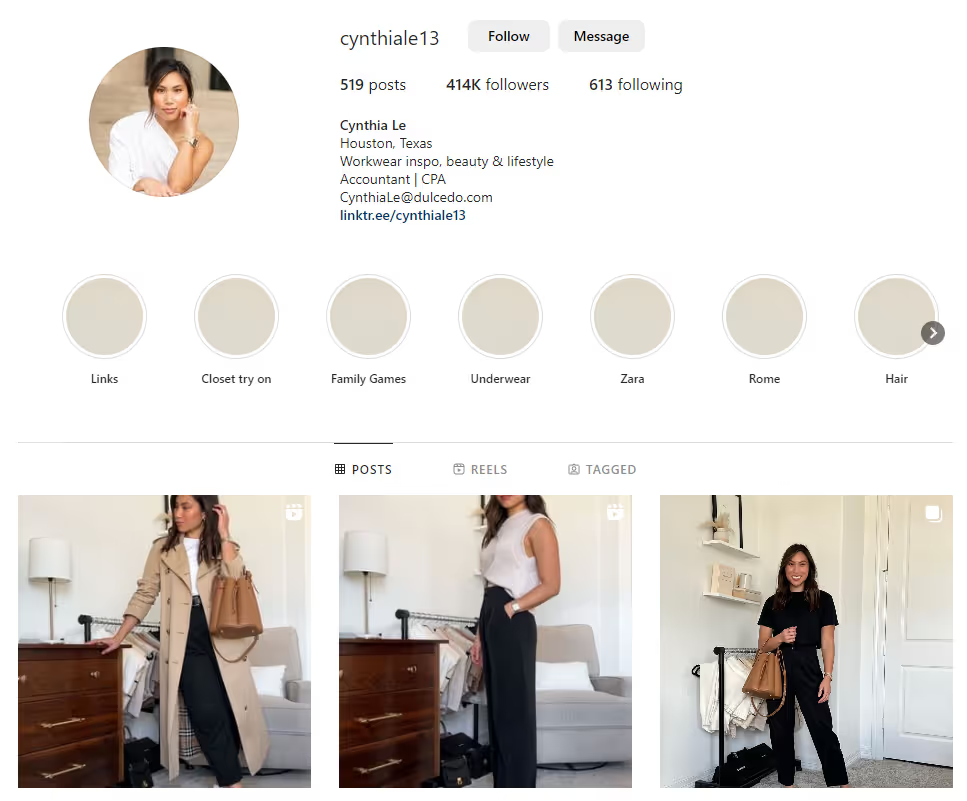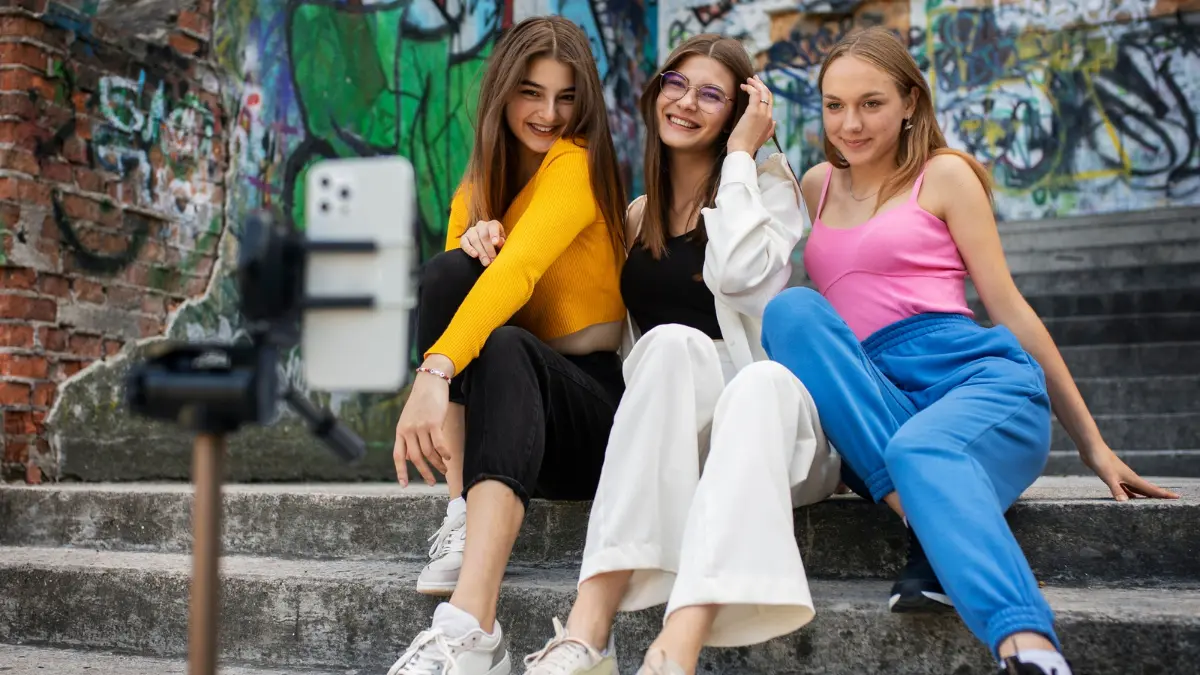It used to be that if you wanted an influencer partnership on Instagram, you’d have to spend a lot of money.
But those days are gone and, since many Instagram influencer types exist, brands can always find an option to fit their budget.
What we mean is that many more influencers are out there than ever before. And they’re doing a great job promoting brands even with less compensation.
Are you interested in learning more?
Great, since we’ve created this guide to help you understand:
- Instagram influencer rates by influencer types
- Instagram influencer pricing by post type
And we’ll get into the factors that affect their pricing.
So, let’s get started!
Instagram Influencer Rates by Influencer Type
Since 61% of consumers trust influencers’ recommendations, it’s easy to see why brands are interested in leveraging collaborations with content creators and influencers.
But how much does it cost for brands to find partners?
While this question can be tricky, the main component of influencer post prices is how many followers the influencer has.
This is why influencers are categorized based on their follower count, and this categorization primarily determines how much you’ll have to pay them.
The influencer types are:
- Nano-influencers: 1,000–10,000 followers
- Micro-influencers: 10,000–100,000 followers
- Macro-influencers: more than 100,000 followers
- Mega-influencers: over 1,000,000 followers
As you can imagine—influencers with more significant followings also receive more considerable compensation.
The number of followers isn’t the only factor that affects pricing, but it lets you make certain assumptions about the following:
- Expertise
- Knowledge of social platforms
- Professional equipment
- High-quality production
- Social proof
At the end of the day, follower counts are so crucial to influencer pricing.
According to a HypeAuditor survey, the cost of Instagram influencers per post is:
- Nano-influencers: $10 – $50
- Micro-influencers: $15 – $110
- Macro-influencers: $185 – $2,500
- Mega-influencers: average minimum price $1,200
These values reflect the average estimations of minimum and maximum prices for each influencer type.
But in general, the more followers, the higher the price — a micro-influencer will be cheaper than a mega-influencer, and so on.
The second most important factor in influencer pricing is the post type. So let’s see how much money a brand needs to spend depending on what kind of post they need an influencer to make.
Instagram Influencer Rates by Post Type
We’ve clarified the influencer payments based on their following, so it’s time to understand fees in terms of content formats.
Depending on the type of post you want, an influencer needs to put different amounts of work and effort into it. Therefore, the pricing will reflect that.
Instagram post—photo
When Instagram launched, it was a photo-sharing platform.
Influencer posts are all across Instagram since they’re an effective way to increase brand awareness in the target audiences.
It’s also affordable for brands that want to partner with several influencers.
There is a formula many influencers use to determine their pricing for sponsored posts on Instagram (based on reach):
Average price per post = No. of impressions x CPM2
CPM is between $12-25 on average.
This means that if you want more engagement—you’ll pay a higher price for getting more attention. It makes perfect sense, doesn’t it?
Instagram post—video/reel
Moving forward, you may have heard that the Instagram algorithm promotes Reels more than other posts. Nobody could blame you for wanting to leverage this trend to your advantage.
Video content is on the rise, but the production costs are high since video needs more effort, time, and tools to film and edit.
The formula to calculate the Instagram video cost is as follows (based on engagement):
Average price per post = (No. of followers x ER) x CPE
CPE (Cost Per Engagement) is between $0.10-$0.50 on average.
Production arrangements, such as renting a studio or specific equipment for influencer content, can further influence this price.
Auniks, a skincare products brand, has collaborated with an influencer to showcase its products.

As you can see, this video is short, but it requires many shots and editing before it can be uploaded.
Is an IG video worth the extra money?
We’re big believers in video on social media platforms since it helps you create unique and engaging content.
Instagram story
Instagram stories are time-sensitive content since they vanish after 24 hours.
You can use photos or videos in your stories, but we suggest you capitalize on video content since it’s more engaging.
Instagram stories allow you to publish a short-form video of up to 60 seconds.
A formula that many influencers use is:
Average price per post = (No. of followers x ER) x CPE
So, we just found the winner in terms of budgeting options for brands.
But Instagram stories have more capabilities than just showing a video or a picture.
Instagram story with additional elements
The good thing about Instagram stories is that you can use several valuable kinds of stickers, such as location or link stickers, to drive traffic to your eCommerce store.
Influencers usually charge a price per “swipe,” website visit, or conversion. When they charge for conversion, the average cost is 3% to 10% of each sale.
A formula to calculate the cost of an Instagram story with additional elements is as follows:
Price per Instagram story with additional elements = price per Instagram story + price per swipe up
Some years ago, the swipe-up feature was available only to users with over 10,000 Instagram followers.
But nowadays, everyone can use this feature.
Giveaway or contest
Contests and giveaways are great content formats since they leverage user-generated content (UGC), encouraging users to engage with brands and share their content to promote products or services.
These activities often require a lot of content to announce and promote the contests or free product giveaways on social media.
So the pricing varies based on how much content the influencer needs to produce.
Brand takeover
A brand takeover means an influencer being a host, using a brand’s account to share content.
Usually, this type of influencer marketing effort is more complicated and requires planning.
Influencers can use various types of content, from Instagram story takeovers to photos or Reels.

Brands can benchmark the influencer's actions during the brand takeover and use the above formulas to calculate the overall payment.
Following and post types are the most significant factors determining influencer rates, but there are a few more things to remember.
Let’s see what they are.
6 Additional Factors That Affect Influencer Pricing
In addition to follower count and the post type you want an influencer to create, these six factors also affect influencer marketing pricing.
Usage rights
Intellectual property can be a legal minefield, but the fundamental question is—who owns the rights to the assets created by influencers?
If the brands want to use and repurpose the original content several times and for different campaigns, they need the influencer’s agreement to do so.
When influencers grant the rights to use the content, they won’t receive payments for future uses, so the price will likely be higher than usual to make up for that.
Exclusivity clause
Some influencers work for years with specific brands and don’t promote their competitors.
This happens through exclusive partnerships.
Brands can negotiate with influencers to sign a non-compete agreement.
As you can imagine, exclusive agreements increase the prices since they limit the influencers’ potential collaborations.
Campaign length and complexity
The campaign’s length and complexity strongly affect the price.
They define the time and effort influencers need to invest to meet the campaign's requirements.
Campaigns that last for a long time require more content pieces and more intricate posts.
The complexity of the content pieces also affects the pricing since the production costs will be higher.
For instance, an Instagram post doesn’t need the same production time as a Reel.
Cross-platform campaigns
Creators with a significant presence on social media don’t only use Instagram but also other social platforms such as TikTok, Snapchat, and LinkedIn.
In our example, the content creator has 414,000 followers on Instagram, which makes her a mega-influencer.

She also has more than 100,000 followers on TikTok, which is a newer platform.

So, the fees will be higher if brands want to leverage the influencer’s full potential to promote them on different social media channels.
While social media platforms have common content types, each platform's creative approach, best practices, and demographics differ.
This means an influencer must ensure the content can be repurposed easily for each platform, which affects the prices because it requires more effort.
Rush orders
To produce high-quality content quickly is complex and, therefore, more expensive.
Rush orders disturb the influencers’ schedules and, as a result, they apply a rush fee to the campaign.
The best way to avoid rush fees is to set achievable deadlines for the campaign before hiring influencers.
This will help them produce better content and will save you money.
Link in bio
If a brand wants an influencer to leave a link to their product or website in their bio for a specific amount of time, it will typically cost extra.
Including a link in an influencer's bio can increase visibility and drive traffic to the brand's website, leading to potential sales.
Additionally, the length of the link in the bio may also impact the cost, with longer durations requiring higher fees.
Find the Perfect Influencer for Your Brand
There are a lot of opportunities to grow your business through influencer marketing.
However, finding the right influencers and making a fair deal for both sides can be challenging.
Insense is an influencer marketing platform where you can find an Instagram influencer that fits your brand perfectly.
Sign up here and get access to our database of over 75k vetted social media influencers to choose from!
Frequently Asked Questions (FAQs)
Influencer marketing campaigns are vital components in brands’ digital marketing strategies.
So we wouldn't be surprised if you’ve got some questions about everything and we’ve, luckily, got the answers.
Q1. How do you determine your influencer campaign budget?
To determine the influencer marketing budget, you need to calculate the potential conversions as well as knowing the customer’s lifetime value (LTV) and the cost to acquire them (CAC).
Alternatively, subtract the influencer program sales from program costs to measure an influencer campaign's profit.
If it’s the first time you’re launching an influencer campaign, calculate the potential outcome through the average conversion rate of the influencer and the price of your products.
Q2. How do you know what type of influencer you should approach for your business?
While the follower count determines the types of influencers, there are also factors such as payments, content quality, engagement rates, etc.
Before collaborating with any influencer, you must evaluate your needs, budget, and social network.
Then choose an influencer that matches best based on these criteria.
Q3. What do you need before you contact a prospective influencer?
Before contacting any influencers, ensure you’ve set the criteria to evaluate them:
- Content quality
- Creator niche
- Community engagement
- Authenticity of followers
When someone fits your criteria, send them a direct message (DM) on Instagram, or engage with them in the comments.
You can also use marketing tools like Insense.



.avif)
.avif)

.avif)



